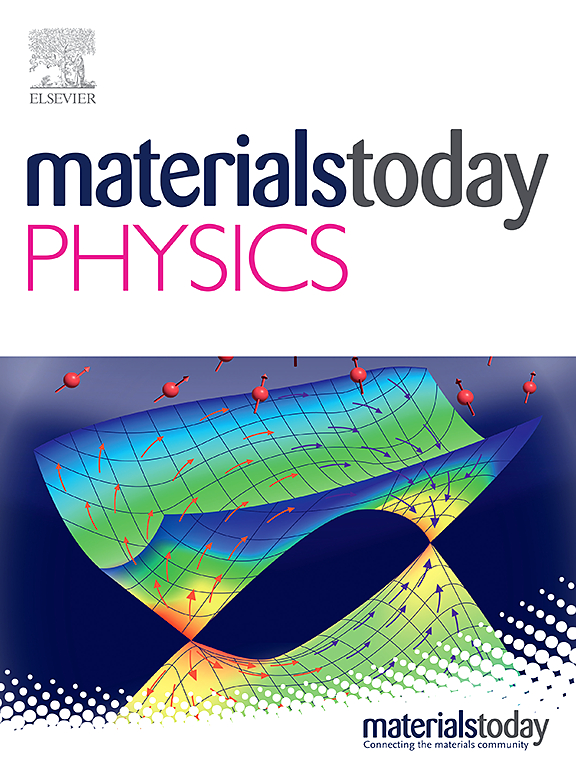Antisite defect “conductivity barrier” and 5d orbital hybridization for enhanced resistivity in piezoelectric crystals
IF 9.7
2区 材料科学
Q1 MATERIALS SCIENCE, MULTIDISCIPLINARY
引用次数: 0
Abstract
Piezoelectric crystals are extensively employed in sensing technologies, yet their intrinsic low resistivity at elevated temperatures poses a critical challenge, significantly hindering their application in high-temperature environments. It is found that Ta-containing piezoelectric crystals possess higher resistivity than their Nb-containing counterparts, but the underlying mechanisms remain unclear. Herein, we propose a novel electron relaxation mechanism that highlights the 5d orbital hybridization induced efficient electron trapping in antisite defects through a comparative analysis of La3Ga5.5Ta0.5O14 (LGT) and La3Ga5.5Nb0.5O14 (LGN) crystals. Our study reveals that the spatial extension of Ta-5d orbitals strengthens hybridization with O-2p orbitals, significantly increasing the crystal field splitting energy and deepening the TaGa polaron potential well, which collectively elevate the excitation energy for electron release, accelerate the carrier recombination, and ultimately suppress electrical conductivity while boosting resistivity. Leveraging this mechanism, LGT crystal features a remarkable three-orders-of-magnitude enhancement in resistivity by co-regulation of electron concentration, antisite defect density and occupation sites via combining oxygen atmospheric control and Al doping. This study provides a new insight into the conduction mechanism and a general Ta-based design strategy for resistivity modulation beyond the piezoelectric crystals.


压电晶体电阻率增强的反位缺陷“电导率势垒”和5d轨道杂化
压电晶体广泛应用于传感技术,但其在高温下固有的低电阻率带来了关键挑战,严重阻碍了其在高温环境中的应用。发现含ta的压电晶体比含nb的压电晶体具有更高的电阻率,但潜在的机制尚不清楚。本文通过对La3Ga5.5Ta0.5O14 (LGT)和La3Ga5.5Nb0.5O14 (LGN)晶体的对比分析,提出了一种新的电子弛豫机制,强调了5d轨道杂化诱导的反位缺陷中有效的电子捕获。研究表明,Ta-5d轨道的空间延伸增强了与O-2p轨道的杂化,显著提高了晶体场分裂能,加深了TaGa极化子势阱,共同提高了电子释放的激发能,加速了载流子的复合,最终在提高电阻率的同时抑制了电导率。利用这一机制,LGT晶体通过结合氧大气控制和Al掺杂对电子浓度、反位缺陷密度和占据位点的共同调节,其电阻率显著提高了三个数量级。该研究为导电机制提供了新的见解,并为超越压电晶体的电阻率调制提供了一种通用的基于ta的设计策略。
本文章由计算机程序翻译,如有差异,请以英文原文为准。
求助全文
约1分钟内获得全文
求助全文
来源期刊

Materials Today Physics
Materials Science-General Materials Science
CiteScore
14.00
自引率
7.80%
发文量
284
审稿时长
15 days
期刊介绍:
Materials Today Physics is a multi-disciplinary journal focused on the physics of materials, encompassing both the physical properties and materials synthesis. Operating at the interface of physics and materials science, this journal covers one of the largest and most dynamic fields within physical science. The forefront research in materials physics is driving advancements in new materials, uncovering new physics, and fostering novel applications at an unprecedented pace.
 求助内容:
求助内容: 应助结果提醒方式:
应助结果提醒方式:


